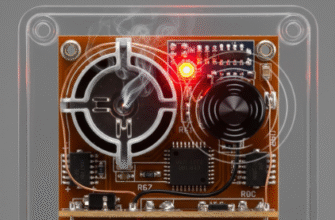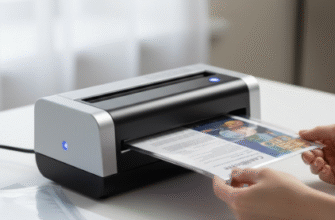Take a moment and look at the pen sitting on your desk, or perhaps tucked into your bag. It seems so simple, so commonplace. We grab one without a second thought, scribble a note, sign a document, and toss it back. Yet, this humble tool is the culmination of centuries of innovation, frustration, and ingenuity. The journey from messy ink pots and scratchy quills to the smooth, reliable ballpoint pen we use today is a fascinating story of human persistence and the relentless drive for convenience.
Echoes of the Past: Quill, Reed, and Inkwell
For much of human history, writing was a far more involved process. Imagine needing not just paper, but a carefully sharpened bird feather – the quill – and a pot of liquid ink. The earliest writing implements, dating back thousands of years, were often reeds or bamboo stalks, shaped and split to hold a small amount of ink. Then came the quill pen, dominant for over a millennium, typically made from goose, swan, or turkey feathers. Preparing a quill was an art in itself, requiring careful cutting and shaping of the nib. Writing involved constantly dipping the quill into an inkwell, ensuring just the right amount of ink was loaded, and dealing with inevitable drips, smudges, and the need for frequent re-sharpening. It was slow, messy, and required considerable patience.
Metal nibs eventually emerged, offering more durability than feathers, but they still relied on the external inkwell. The fundamental limitation remained: the writing tool and its ink supply were separate. This tethered the writer to a desk and made spontaneous writing or writing on the move impractical, if not impossible.
A Reservoir of Hope: The Fountain Pen Arrives
The dream was a pen that carried its own ink. Early attempts at creating such a device date back centuries, with mentions of reservoir pens appearing as early as the 10th century. However, reliable, practical designs proved elusive. The core challenge was controlling the ink flow – preventing leaks while ensuring a consistent supply to the nib through capillary action and air pressure.
Significant progress occurred in the 19th century. The invention of durable iridium-tipped gold nibs, vulcanized rubber (which could hold ink without corroding), and free-flowing inks paved the way. Romanian inventor Petrache Poenaru received a French patent for a fountain pen with an ink barrel made from a large quill in 1827. However, it was American Lewis Edson Waterman who is often credited with creating the first truly practical fountain pen in the 1880s. Legend has it his frustration over a leaking pen ruining an important contract spurred him to devise a better feed system – the mechanism regulating ink flow. Waterman’s design, incorporating multi-channel feeds using capillary action, marked a turning point.
The fountain pen was revolutionary. It offered unprecedented portability and convenience compared to dip pens. Writing became smoother, faster, and less tethered. Companies like Waterman, Parker, and Sheaffer emerged, refining designs, introducing filling mechanisms like pistons and levers, and turning the fountain pen into both a functional tool and a status symbol. Yet, it wasn’t perfect. Fountain pens could still leak, especially with changes in air pressure (a problem for aviators), and the liquid ink required time to dry, risking smudges.
Verified Fact: Lewis Waterman’s key innovation wasn’t the idea of a reservoir pen itself, but a reliable feed system. His first patented design in 1884 focused on using capillary action through fissures to ensure consistent ink flow and prevent blotting. This practical improvement is why he’s often celebrated as the father of the modern fountain pen.
The Ballpoint Moment: A Rolling Revolution
The limitations of the fountain pen kept inventors searching for an alternative. The breakthrough idea came from a Hungarian newspaper editor named László Bíró. Working in Budapest in the 1930s, Bíró noticed that the ink used in newspaper printing dried quickly and left a smudge-free mark. Why couldn’t this type of ink be used in a pen? The problem was viscosity – newspaper ink was thick, almost paste-like, and wouldn’t flow properly through a traditional fountain pen nib.
Bíró’s genius lay in combining this quick-drying, viscous ink with a new delivery mechanism: a tiny rotating metal ball bearing housed in a socket. As the pen moved across paper, the ball would rotate, picking up ink from an internal reservoir and transferring it smoothly onto the surface. The small space between the ball and socket prevented the thick ink from drying out or leaking, while the rolling action ensured continuous application.
Working with his brother György, a chemist, Bíró refined the ink formula and the ball-socket mechanism. They patented the invention in 1938. The timing proved fortuitous, though fraught with peril. With the outbreak of World War II, the Bíró brothers, who were Jewish, fled Hungary for Argentina in 1941. They filed another patent there in 1943 and established Bíró Pens of Argentina.
War, Flight, and Early Adoption
The new pen’s ability to write at high altitudes without leaking (unlike fountain pens, which relied on gravity and air pressure) caught the attention of the British Royal Air Force. Fountain pens were unreliable for pilots and navigators who needed to make notes during flight. The British government licensed the rights, and the “Biro” pens were produced for RAF aircrews. This niche application proved the ballpoint’s unique advantages under demanding conditions.
Mass Market Mayhem: From Luxury to Ubiquity
After the war, the ballpoint pen entered the civilian market, but its journey to ubiquity was turbulent. An American salesman, Milton Reynolds, encountered the Biro pen on a trip to Argentina. Recognizing its potential, he returned to the US, made slight modifications to bypass Bíró’s patent (which wasn’t fully secured in the US yet), and launched the “Reynolds Rocket” in late 1945. Marketed as the “first pen to write underwater,” it caused a sensation, despite its high price (equivalent to over $150 today) and initial reliability issues. The initial Reynolds pens often leaked, skipped, or simply failed, leading to a consumer backlash.
Meanwhile, Frenchman Marcel Bich acquired the patent from Bíró for the European market. Bich took a different approach. He spent two years meticulously refining the design and manufacturing process, focusing on quality control and drastically reducing production costs. In 1950, he launched the Bic Cristal under his newly formed Société Bic. With its simple hexagonal transparent barrel (inspired by wooden pencils), reliable performance, and incredibly low price, the Bic Cristal democratized the ballpoint pen.
Important Note: Early ballpoint pens faced significant hurdles. Initial inks were imperfect, and manufacturing tolerances for the ball and socket were critical. Many early models suffered from skipping, leaking, or clogging, tarnishing the technology’s reputation before designs like the Bic Cristal perfected the formula for reliability and affordability.
Competition exploded. Companies innovated with different ink formulas (smoother, faster-drying), retractable mechanisms (eliminating the cap), varied point sizes, and ergonomic designs. The ballpoint rapidly overtook the fountain pen for everyday writing tasks. Its low cost, reliability, ability to write through carbon copies, and general ease of use made it the dominant writing tool worldwide.
The Pen in Your Pocket: A Legacy of Convenience
From the laborious dipping of quills to the effortless click of a modern retractable, the evolution of the pen reflects a fundamental human desire: to capture thoughts and communicate efficiently. The fountain pen offered the first taste of untethered writing, bringing elegance and portability. But it was the ballpoint pen, born from observing newspaper ink and perfected through wartime necessity and post-war mass production, that truly put a reliable, affordable writing tool into the hands of billions.
Today, we have gel pens, rollerballs (which use a liquid ink similar to fountain pens but with a ball delivery), and erasable inks, all building upon the foundations laid by these earlier innovations. While digital devices dominate much communication, the simple act of putting pen to paper endures. The next time you use a ballpoint, remember the journey – from feather and inkwell, through leaky reservoirs, to the tiny spinning sphere that changed writing forever. It’s a small marvel of engineering we rightly take for granted, but one with a rich and surprisingly complex history.







